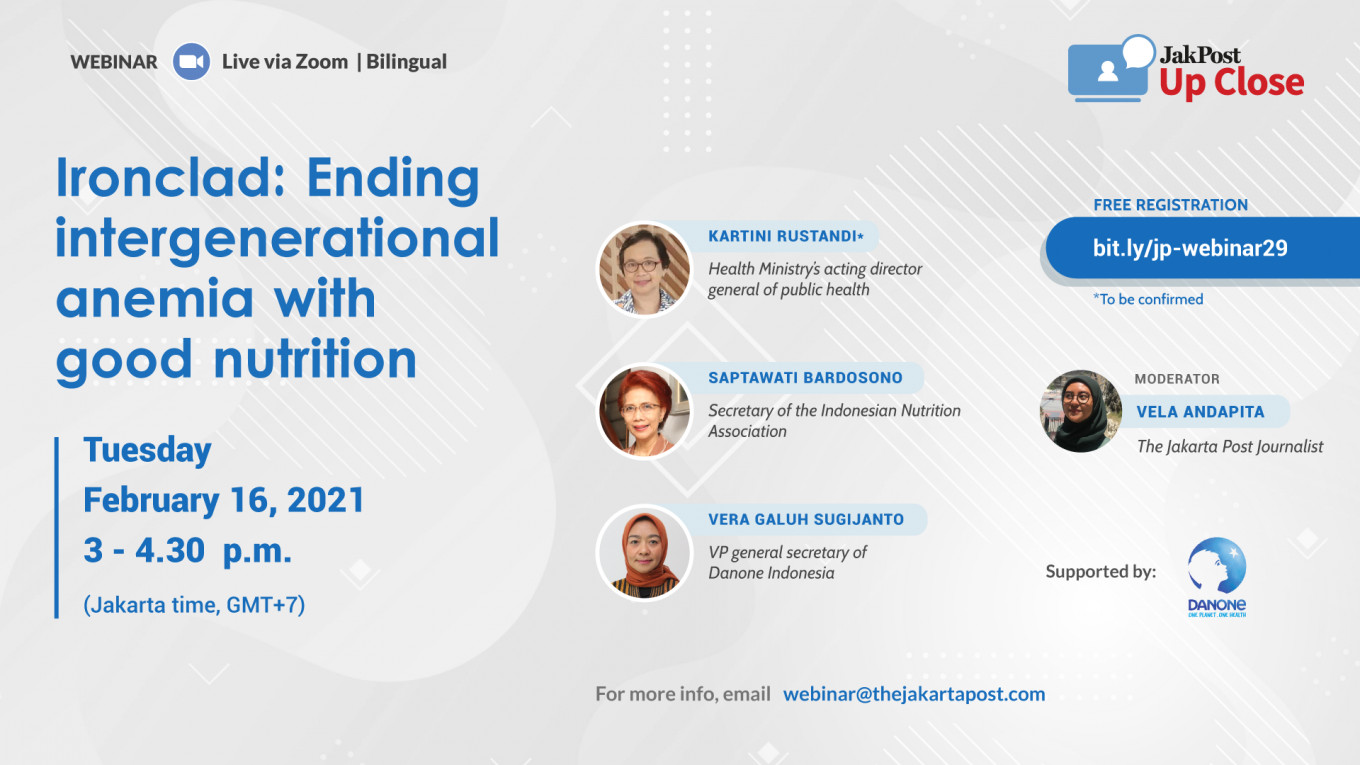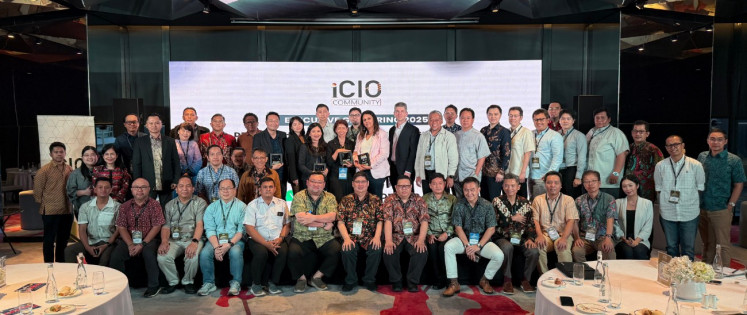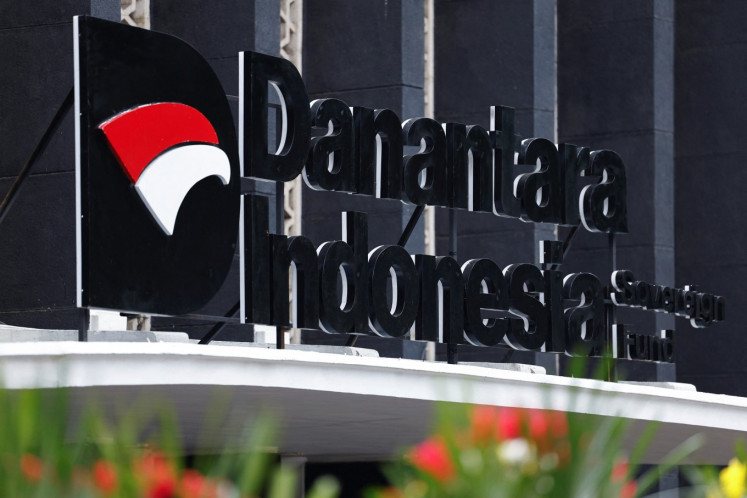Popular Reads
Top Results
Can't find what you're looking for?
View all search resultsPopular Reads
Top Results
Can't find what you're looking for?
View all search results‘Ironclad: Ending intergenerational anemia with good nutrition’
According to the Health Ministry’s 2018 Basic Health Survey, anemia prevalence is 48.9 percent among pregnant women, 32 percent in adolescents and 38.5 percent in toddlers.
Change text size
Gift Premium Articles
to Anyone
Many of us are familiar with this issue: Anemia prevalence.
According to the Health Ministry’s 2018 Basic Health Survey, anemia prevalence is 48.9 percent among pregnant women, 32 percent in adolescents and 38.5 percent in toddlers.
Anemia is believed to be an intergenerational health condition in which the sufferer lacks iron in their blood. It decreases immunity, concentration and productivity. The condition poses further health issues in women, as it increases the risk of complications during adolescent pregnancy. Adding to that, the complications also increase the risk of malnutrition for the baby. If the condition persists, anemia could cause major problems for Indonesia’s future generations.
In 2020, the COVID-19 pandemic presented unprecedented challenges in efforts to fulfill nutrients for pregnant women and children across the country. Social restrictions and other crises caused by the pandemic have made it more difficult for pregnant women and mothers of toddlers to access good nutrition.
JakPost Up Close on anemia prevalence
In commemoration of this year’s National Nutritional Day, JakPost Up Close (The Jakarta Post webinar series) will discuss necessary efforts to break the anemia cycle through collective and well-coordinated measures by multiple parties. The goal is to improve public awareness on reducing iron-deficiency anemia prevalence in Indonesia
The series will feature authoritative speakers representing relevant stakeholders to bring about diverse points of view regarding the matter to enlighten the audience on problems, challenges and possible solutions around the issue of the anemia prevalence in Indonesia.
The series will highlight various issues, such as:
--Current prevalence of anemia in Indonesia, particularly among children, adolescents and pregnant women.
--Government efforts and future plans in fighting anemia, as well as challenges in implementing them.
--Initiatives introduced by the private sector to help the government reduce anemia prevalence in Indonesia.
The Zoom webinar will be held in Indonesian with simultaneous English translation, from 3 p.m. to 4:30 p.m. on Tuesday, February 16 and will feature:
- Kartini Rustandi, Health Ministry’s acting director general of public health*
- Prof. Dr. dr. Saptawati Bardosono, M.Sc., secretary of the Indonesian Nutrition Association
- Vera Galuh Sugijanto, VP general secretary of Danone Indonesia
Kartini Rustandi will discuss topics, including current statistics regarding anemia prevalence in Indonesia, especially among children, teenagers, pregnant women and women; how the pandemic has affected the government’s efforts to address nutrition fulfillment, as well as the government’s current efforts, future plans and targets in reducing anemia prevalence.
Prof. Dr. dr. Saptawati Bardosono, M.Sc. will share his insights into key factors that cause the high anemia prevalence in Indonesia; health risk of anemia for individuals as well as for the nation’s future and policy recommendations to improve the situation.
Learn more about combating anemia prevalence from the private sector.
Vera Galuh Sugijanto will share Danone’s initiatives to address anemia in Indonesia and challenges for the private sector to ensure programs promoting public health are sustainable.
The JakPost Up Close event will be of interest to the public at large, nutritionists, health experts, academics, university students, private sector leaders and staff, researchers and international community as well as those interested in seeking information on the latest developments in anemia prevalence and in establishing a partnership to work hand-in-hand to combat anemia.










